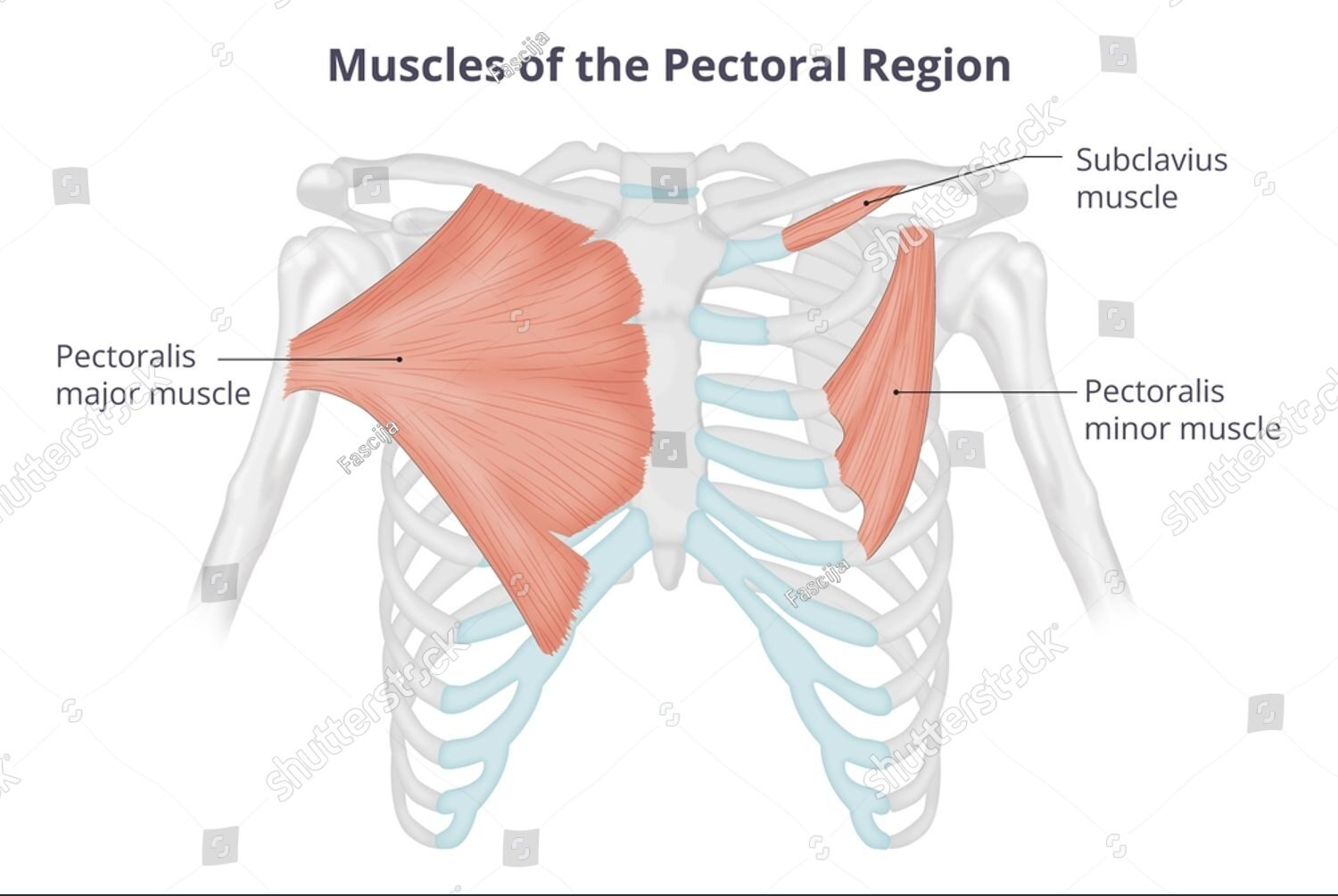The pectoral muscles, commonly referred to as the pecs, are major muscles in the upper body. They are located on the chest and play a significant role in movements involving the arms and shoulders, such as pushing and lifting.
Pectoral Muscle
The pectoral muscles consist of two main muscles: the pectoralis major and the pectoralis minor.
1. Pectoralis Major:
The pectoralis major, the larger of the two pectoral muscles, originates from the clavicle, sternum, and the cartilage of the first six ribs and inserts on the humerus.
Functions:
The pectoralis major is responsible for several movements of the shoulder joint:
- Adduction of the upper arm: Bringing the upper arm across the body.
- Internal rotation of the shoulder joint.
- Shoulder flexion: The clavicular fibers assist in raising the upper arm up (shoulder flexion), while the sternal fibers contribute less to this action.
2. Pectoralis Minor:
The pectoralis minor, a smaller muscle located beneath the pectoralis major, originates from the third, fourth, and fifth ribs and inserts to the coracoid process (front of shoulder).
Functions:
The pectoralis minor primarily acts on the shoulder girdle. Its main functions include:
- Stabilizing the scapula by drawing it inferiorly and anteriorly towards the ribs.
- Assisting in movements involving the shoulder girdle, such as protraction (forward movement) and downward rotation.
In summary, the pectoralis major and minor muscles play vital roles in various upper body movements and shoulder stability, encompassing actions like pushing, pulling, and lifting. Strengthening and conditioning these muscles are essential for overall upper body strength and functionality.





Leave a Reply